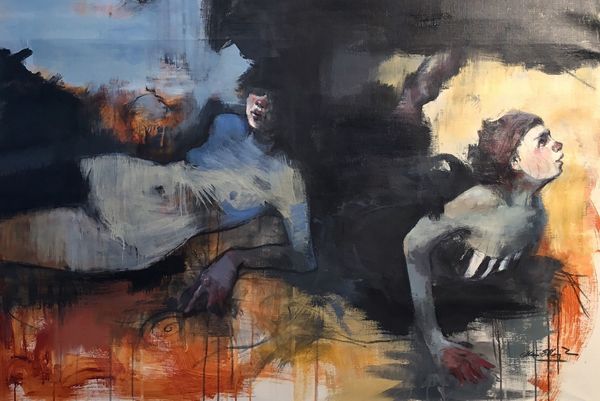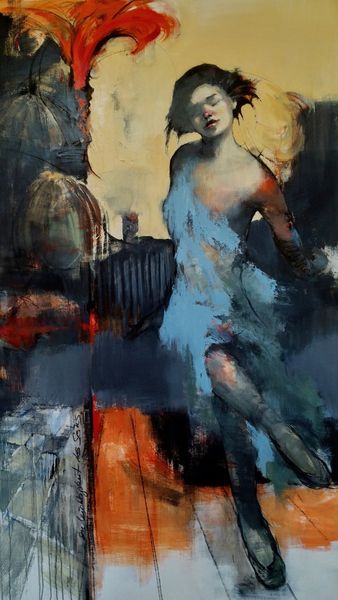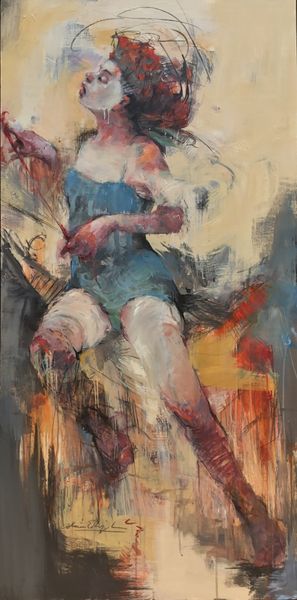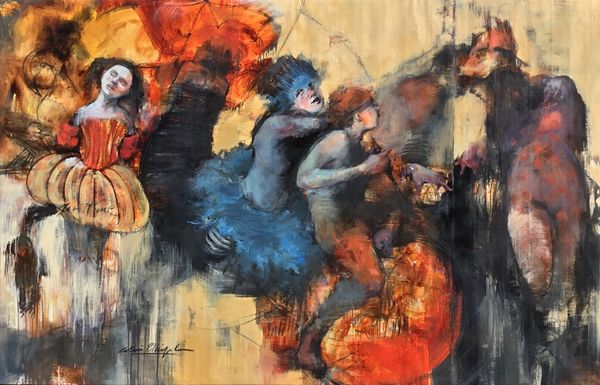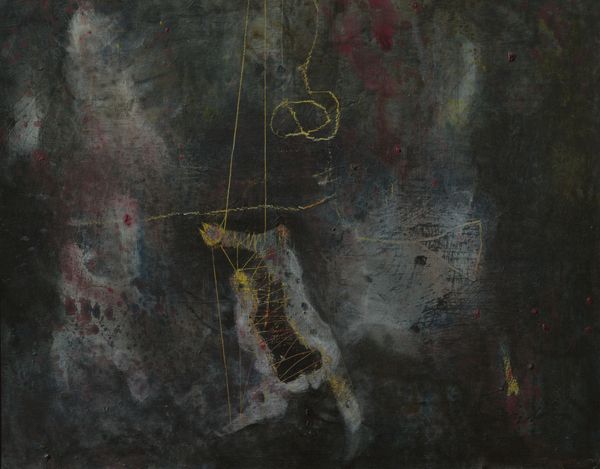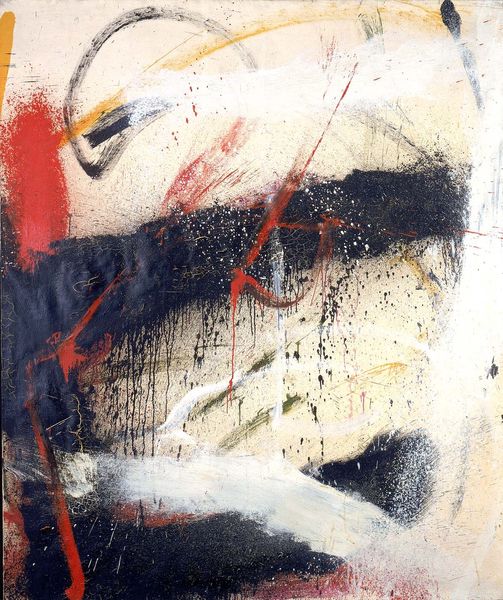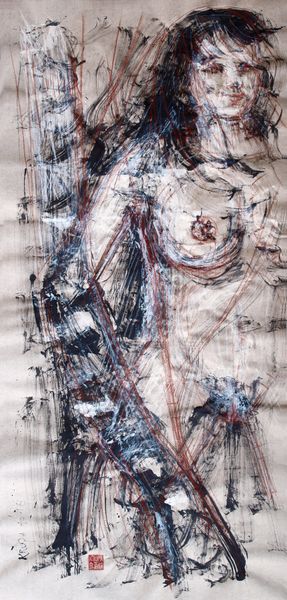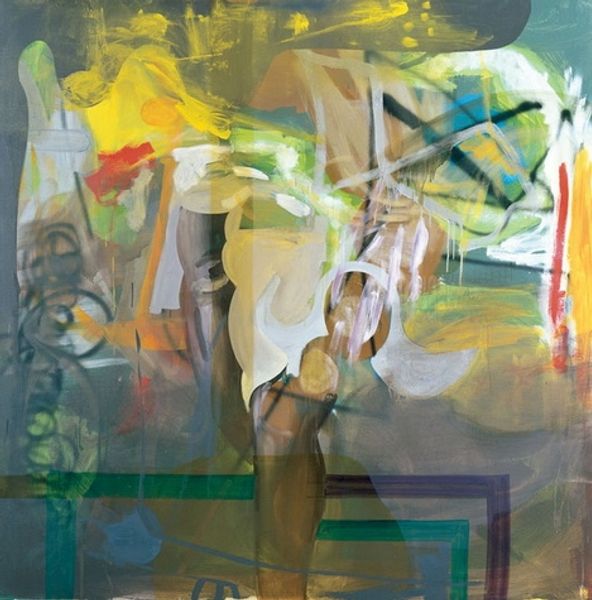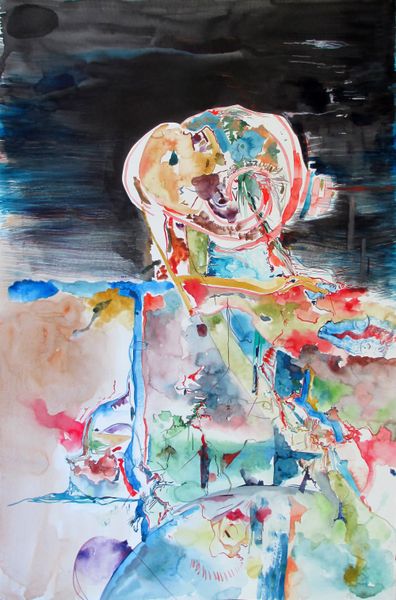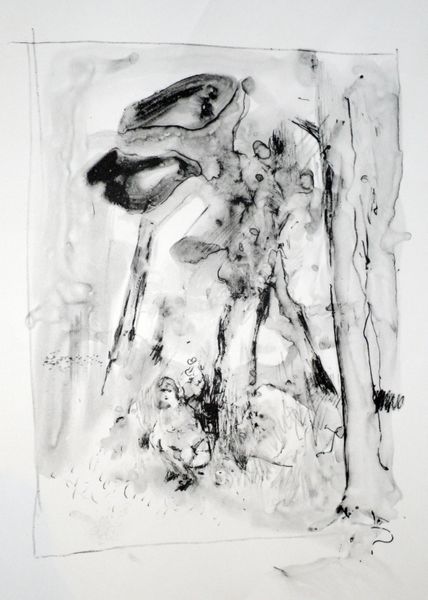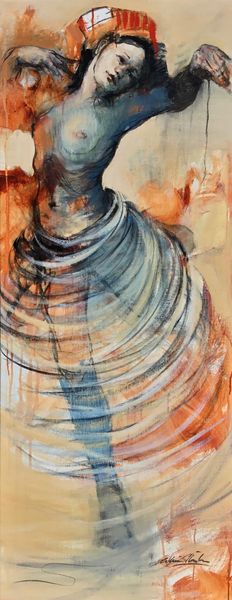
painting, oil-paint
#
portrait
#
figurative
#
abstract expressionism
#
painting
#
oil-paint
#
figuration
#
form
#
oil painting
#
expressionism
#
matter-painting
#
modernism
Copyright: Modern Artists: Artvee
Editor: "The White Room," an oil painting by Cathrine Edlinger-Kunze, presents a ghostly figure shrouded in whites and grays. There's an incredible tension between visibility and obscurity. How do you interpret this ethereal image? Curator: Immediately, I am struck by how the white acts almost like a veil, both concealing and revealing. Notice the subtle yet persistent rendering of the body – fragmented, yet undeniably present. The symbolism is heavy. What does white usually signify in art and culture? Editor: Purity, maybe? Or surrender? Curator: Yes, both, but consider it also as a blank canvas, a space for both creation and erasure. The figure's obscured gaze and languid pose could symbolize introspection or perhaps a loss of identity. The chandelier hanging to the left. Do you think it is placed at that location to hint that it once existed? Editor: I do. It is the trace of domesticity, a flicker of recognition of where or who the figure might once have been. But its ghost-like appearance mirrors that of the human figure. Curator: Precisely! The artist uses familiar symbols, almost clichés—the domestic interior, the female form—but distorts them through expressionistic techniques, rendering them unstable. Think of it as cultural memory on the verge of dissolving. What emotions does that provoke in you? Editor: A sense of melancholy, of something precious fading away. It makes you want to grab hold of that fading memory. Curator: Exactly. Edlinger-Kunze seems to capture that very human struggle: the tension between remembering and forgetting, presence and absence. Editor: It's fascinating how a single color, white, can hold so much cultural and emotional weight. Thanks, that really opened my eyes to the depth of this piece!
Comments
No comments
Be the first to comment and join the conversation on the ultimate creative platform.
